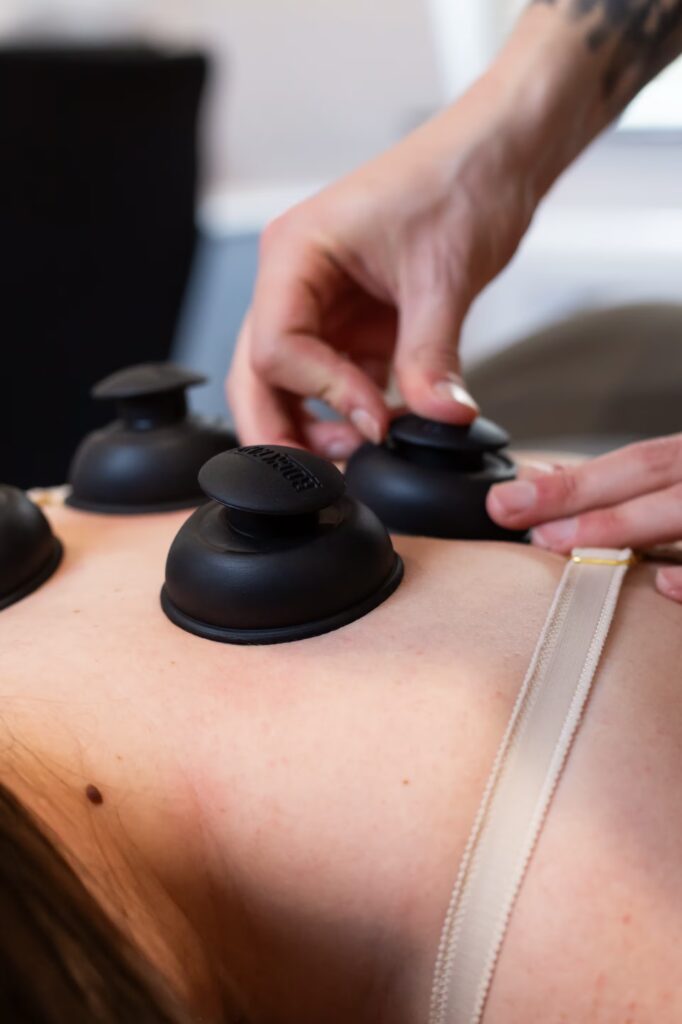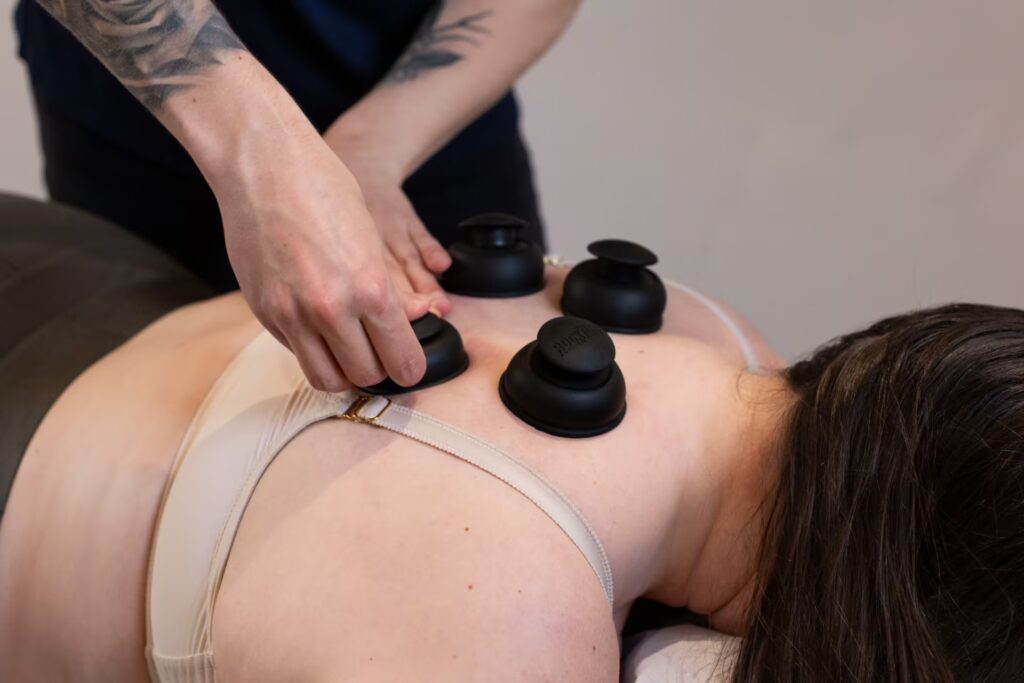About Cupping Therapy
Traditionally, cupping therapy is a technique that has been practiced for hundreds of years for relieving various pains and symptoms. There are many different types of cupping each with their own methods and benefits. The research around cupping is constantly evolving and there is growing evidence for its use in manual therapy clinics.
Cupping therapy can often help to:
- Reduce pain and inflammation.
- Decrease muscle tightness.
- Increase range of motion.
- Increase blood flow.
Cupping therapy offers a very similar benefit to deep soft tissue massage for helping with various aches and pains. Dry Cupping (as used at The Courtyard Clinic) works by using various sized cups placed onto the skin creating a vacuum or suction force, which gently pulls your skin and underlying tissue (such as fascia) upward into the cup. These cups are left in place and then removed after a short amount of time. This process is often painless, but you will feel some tension around the areas that the cups are placed. Often patients describe this as a therapeutic feeling.
Myofascial cupping is a subcategory of dry cupping and works in a similar way. Once the cups are placed onto the skin, the cups are gently manipulated to stretch and pull on the underlying tissue. The practitioner might ask you to do some simple movements with the cups in place, this can be especially useful in treating pain and movement dysfunctions related to sports. The cups are always made of silicone which helps with this process. This process should also be painless, but you will feel more tension as the cups are gently moved and stretched.


What should you expect after Cupping Therapy?
There are very few side effects of dry cupping. It can be compared to having a deep soft tissue massage, in which (very rarely) you may temporarily feel dizzy or lightheaded afterwards.
The cups may leave some temporary marks on the skin, these are often confused with bruises, however they are not the same. The marks are caused when the suction inside the cup causes blood cells inside of tiny blood vessels (called capillaries) to be drawn up and into the skin. Whilst this is the same mechanism as how a bruise is formed, in dry/myofascial cupping there is no trauma to the underlying tissue. How much your skin marks will depend on lots of factors such as: how much suction is used, how long the cups are left on for and the area being treated. The marks usually go away within 7-14 days of the treatment. If you have any concerns about the marks, please discuss this during your appointment.
Who can have cupping therapy?
Almost anyone can have cupping therapy due to its low risks. It can be especially beneficial for sports individuals. However, cupping therapy isn’t suitable for everyone. You should avoid cupping therapy if you have any of the following:
- Cardiovascular disease
- Blood thinning medication (Anticoagulants)
- Blood clotting disorders (Hemophilia)
- Skin conditions, like
- Eczema and Psoriasis (only on the area being treated.)
Cupping therapy can often help to:
If you are unsure or have any questions about if cupping is right for you, please get in touch.